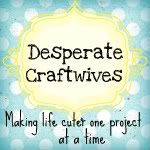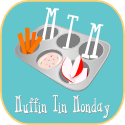SCIENCE FAIR
1st Place Winner!
"ROTTEN TEETH"
I remember a few months ago when my son asked yet again for soda to drink when we went out to eat. I wouldn't let him have any and he didn't understand why all his friends could have it and not him. No six year old cares about benzene, chemicals, additives, etc. A little boy just knows something tastes good and he wants more. I decided to try a different approach and talked to him about what happens to your teeth over time if you drank sugary, acidic drinks.
Note...this experiment wasn't meant at all to scare Batman but to gently guide him into making healthier choices. That includes eating plenty of fruits and vegetables instead of sugary, hydrogenated oil laden food. Also, choosing water over sugary drinks.
I showed Batman a child appropriate clip on youtube about bad teeth and asked him if he wanted to do an experiment with teeth. He thought it would be "cool" so I took the next step. I asked my girlfriend if her husband (my dentist) could get me some real teeth. I know, kind of gross but I wanted the experiment to be as authentic as possible. He was kind enough to give me six sterilized teeth in really good condition. All white, with no decay.
We were required to have each step of the SCIENTIFIC METHOD included in our project. They include:
Question
Hypothesis
Material List
Detailed Procedure
Graphs
Results
Conclusion
Here goes our project.
Question: What effect does certain drinks have on teeth over time?
Hypothesis: Batman thought that soda (specifically pepsi) would show the most decay.
Material List: 5 teeth, 5 small containers with lids, 2 oz. each of pepsi, sports drink, orange juice, apple juice, and water, measuring cup, camera, kitchen scale.
Detailed Procedure:
1. First Batman weighed each tooth and documented the appearance of each. I put a piece of aluminum foil on the scale for the tooth to sit on.
2. Next he measured out 2 oz. of liquid for each container and put one tooth in. Each container was labeled.
3. Each tooth sat in the liquid for 21 days at room temperature.4. Each tooth was then weighed again and the appearance of each tooth was documented.
This is a picture of all of the teeth after having soaked in each liquid for 21 days. They are in order left to right: soda, sports drink, orange juice, apple juice, and water.
Graphs: Batman did two graphs. One showed the before and after weight of each tooth. For the second graph Batman asked his friends what their favorite drink was.
Results: The tooth dipped in soda showed the most decay. The weight of this tooth decreased by .44g.
Conclusion: Batman's hypothesis was correct that the tooth soaked in soda would show the most decay. Proper oral hygiene is key to protecting your teeth.
Side note: All teeth except the one soaking in water showed decay. The teeth soaking in soda and sports drink showed significant decay.
Batman did a great job on his board. He did all of the writing, coloring, and pasting. I helped with the placement of things, and typed up the headers. Batman had to talk to four judges and did a great job explaining his project.










































Congratulations Batman! Your science project rocked! After looking at those teeth I'll be drinking more water.
ReplyDeleteWhat an awesome project. Congratulations!
ReplyDeleteLOL ppls
ReplyDeleteNice work Batman! We are currently working on Science Fair too! I was searching how to get teeth for this same idea, and found your blog. I am afraid to ask, but where did you get the teeth? Teeth kinda creep me out, so I am trying to find a good option. Thanks for any help!!!
ReplyDeleteMy dentist actually gave me a bag of sterilized teeth. I know, I was a bit grossed out too which is why I used gloves all the time. You could also use white egg shells because their content mimics to a certain degree what teeth are made of. I think the teeth though really drove home the point of decay. Both the adults and children were fascinated!
Deletedoes it work well (the hollow eggs) with tea, coffee, soda, grape juice, or orange soda? i'm doing a science fair project and this seemes interesting and easy
Deleteawesome dude i am doing the same thing now u rock
ReplyDeleteThis experiment was a great job that it gave me ideas for a project of my own. Thanks!!! (;
ReplyDeleteWhat is the brand of your kitchen scale? I can't find one that will measure things as light as a tooth.
ReplyDeleteWell done! Very nice experiment!
ReplyDeleteWill this work if you only soak teeth for 2 days. Not much time left and I work for a dentist.
ReplyDeleteWhat kind of scale did you use? I can't find one that will measure precisely enough! Thanks!!
ReplyDeleteAshley,you need to get a digital kitchen scale that weighs in grams. You can get them at Walmart. I hope this helps you. Good luck. 😊😊
DeleteI'm doing this project as well and my dentist said they couldn't do but they sent me to a lab and gave me fake teeth they put on dentures would that still work?
ReplyDeleteNo it will not. You need to use eggshells or whole eggs because they closely resemble the enamel of a natural tooth. Porcelain teeth/dentures won't work because of this. I hope this helps you. Good luck. 😁
Deletedenture teeth will not work,...they will either be porcelain or a composite material.
ReplyDeleteAnonymous yes this experiment does work EXTREMELY well with hollowed out eggshells! Just remember to weigh the shells after hollowing them out, before putting them in the different liquids. Also when weighing them each day onward,remember to DRAIN the excess liquid out before weighing them again. We are doing the same experiment. Good luck!! 😊😊
ReplyDelete